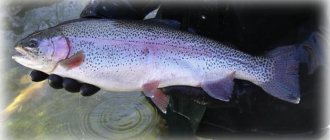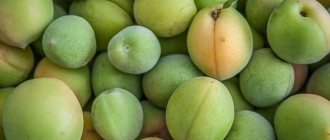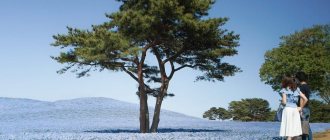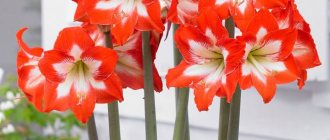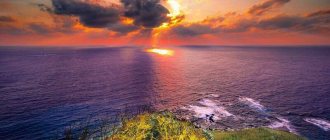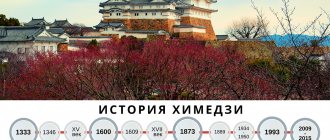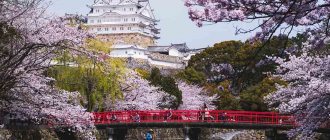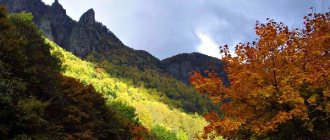Wisteria in Japan - what is it?
In Europe it is known as wisteria. Subtropical plant, with large deciduous vines and a rigid trunk. Her flower brushes are somewhat reminiscent of grapes. The flowers themselves are white, blue, violet, violet-blue, lilac, pink or purple, with a pleasant aroma. Some even compare it to the Ava tree from the movie Avatar.
Its flowering period is extremely short, just like sakura. So if you want to watch, you only have a couple of weeks left.
In Japan, the flower symbolizes protection, pure feminine beauty, poetry and youth. Its popularity is in second place, after sakura, and can be found almost throughout Japan.
According to legend, somewhere there is even a wisteria tree that is more than 1200 years old. But there are no exact indications about its location and officially, the oldest tree is located in Ashikaga Park.
Wisteria on the island of Kyushu
DAY 1 – FUKUOKA After the end of the cherry blossom season, another tree begins to bloom in Fukuoka and throughout the island of Kyushu. Wisteria has been beloved by the Japanese since the beginning of the Nara period (710-794 AD) and was even mentioned in the famous Manyoshu anthology (the oldest existing collection of Japanese poetry, compiled in the 8th century). Wisteria can grow in harsh conditions, and some species boast edible flowers and roots, as well as bark with medicinal properties. During our trip to Fukuoka we will visit the famous Maizuru Park and Fuji Garden. Let's enjoy the view of blooming wisteria in the very center of the city! 10 of the 30 trees here are over 100 years old and were brought here from Higashi Koen (Hakata). Under the care of experienced gardeners, plants today are in better condition than ever. A real treat for the eyes and an incredible riot of colors! Let's consolidate the impression with man-made beauty - we will visit the Fukuoka Art Museum. This is a unique collection of works of art from all over the world, from native Japanese artifacts to modernist works by French painters. It is a must visit, even if you are completely far from the world of art. And in the evening we will certainly take a walk through another amazing Tenjin Park and along the embankment of the Naka River to admire the shimmering night lights in the reflection of the water... Separately, the program is worth noting a visit to the food district. Yatai, the city's most famous symbol, is a small street food stand that usually seats about seven or eight people and creates a relaxing outdoor atmosphere. Located in the center of the city, Nakasu Island has a long row of about 20 yatai that line the water. Typical dishes to try are grilled chicken skewers (yakitori), hot pot (oden) and the most famous Hakata ramen. Various drinks are also available here and help make the yatai a great place to mingle with the locals, although many of the "locals" are Japanese tourists visiting Fukuoka from other parts of Japan.
DAY 2 – KITAKYUSHU / KOKURA In the morning we will head to a very amazingly beautiful place – the Kawachi Wisteria Garden. This private garden boasts a dome-shaped tunnel 3000 m2 wide and 200 m long with 22 different varieties of wisteria, making it one of the leading wisteria gardens in Japan. It is also well known abroad, as CNN included it in its list of "The 36 Most Beautiful Places in Japan". The beautiful gradation of colors hanging from the tunnel will make visitors feel as if they are right in a painting by, for example, Claude Monet. From the observation deck at the top of the garden on the slope there is a beautiful view of the sea of wisteria flowers and the surrounding valley, which is also famous for its bamboo groves. Next we will head to the city of Kitakyushu to spend the second half of the day no less interesting. Kokura Castle was built in 1602 at the beginning of the Edo period. The castle grounds are now known as Katsuyama Park and are a popular walking spot for locals. The top floor of the castle offers panoramic views of the city. In 1998, a small Japanese garden with a pond was opened on the castle grounds. The garden can be seen from a traditional Shoin-style building with several tatami rooms. An interesting feature of the rooms here is that the borders of fabric along the edges of the tatami give an idea of the status of the occupants of the room, for example, the ruling clan occupied the room with the tatami lined with the largest piece of fabric. At the request of our travelers, we will visit one original place - the TOTO toilet museum. Many have already heard about high-tech Japanese toilets and you will have the opportunity to “touch” them. But how interesting it is to know how it all began! The museum takes visitors through the history of TOTO, starting with the first ceramic flush toilet developed in 1914 and the company's official founding in 1917 as a pioneer in the ceramic sanitation industry at a time when most of Japan did not yet have a sewer system. On display are old toilet seats, as well as fine china, which the company produced as a side business in the past.
DAY 3 – KUMAMOTO Welcome to Kumamoto, one of the most authentic cities in Japan. It is best known for its majestic castle. Kumamoto Castle took seven years to build in the early 1600s and was designed by local feudal lord (daimyo) Kato Kiyomasa. Kato was well known for his castle design skills, and his fortifications were highly regarded for their strategic effectiveness. A unique feature of Kumamoto Castle is the reconstructed Honmaru Goten Palace, which was created to celebrate the castle's 400th anniversary and opened to the public in 2008. Extravagant Room in Honmaru Goten Palace The current palace building was built using original materials and methods. Inside the building, visitors can see faithful recreations of the luxurious surroundings in which the daimyo would receive guests. We can find out how the ruling samurai clans lived in the Edo era by visiting the Hosokawa residence. It is the former seat of a branch family of the powerful clan of the same name that ruled Kumamoto in the 19th century. The building is an excellent example of a high-ranking samurai mansion. It is currently open to the public and displays the typical design of a samurai residence. We would like to show you another interesting place in Kumamoto - Suizenji Garden. It is a spacious Japanese-style landscaped garden, best enjoyed along a circular path. It was built by the aforementioned Hosokawa family in the 17th century. The garden reproduces in miniature the 53 post stations of the Tokaido, a major trade route that connected Edo with Kyoto during the Edo period. There is even a miniature Mount Fuji in the garden.
DAY 4 – TOSU / KASHIMA On the fourth day of our Japan tour, we delve even deeper into the history of the island of Kyushu. First of all, we will visit the Yoshinogari Historical Park, which is an outstanding archaeological site in Saga Prefecture. The vast park covers a large settlement from the Yayoi period (300 BC to 300 AD), where dozens of pits, above-ground warehouses and more than 2,000 tombs have been excavated. The settlements excavated at Yoshinogari are believed to have been some of the largest moated villages of their time and are believed to have been the seat of one of the earliest forms of government found in Japan. Next we will head to the Yutoku Inari Temple. It is considered one of Japan's three main shrines dedicated to Inari, along with the Fushimi Inari Shrine in Kyoto and the Toyokawa Inari Shrine in Aichi Prefecture. One of the most popular Shinto deities, Inari, is associated with rice, prosperity and foxes. The main hall stands on high wooden beams 18 meters above the valley plane. From the terrace of the main hall, a walking path leads further to the wooded hill behind the temple. Sections of the path are filled with red torii and interspersed with smaller shrines. You find yourself in a mystical legend about Japanese gods while in this amazing place. Next on the program are water procedures. Ureshino Onsen is a hot spring town in southwestern Saga Prefecture. Its clear waters contain a lot of sodium bicarbonate and sodium chloride, which create the effect of very smooth skin, which gives rise to its unspoken name “Bihada-no-yu” - water of beautiful skin. Ureshino is also famous for its tea and boiled tofu (yudofu).
DAY 5 – DAZAIFU It's time to continue admiring the magnificent wisteria and we invite you to visit Buzoji Temple. Let's admire the flowers at one of the oldest temples in Kyushu. Local trees have a history of about 1300 years, and the flowers reach a length of one (!) meter. A real miracle of nature! We will be laconic in describing this place; it is better to see it once to fall in love with it forever! After enjoying the living garden, we will move to the rock garden at Komyozenji Temple. By the way, the gardens are the main attraction of the temple. You will see two abstract rock gardens: external and internal. The outer garden consists of fifteen stones placed among an area strewn with pebbles. The stones are distributed so that they form the Japanese character for "light". The inner garden can be seen from the main temple building. It is much larger and includes many plant species. Mossy areas of the garden, stones and pebbles are laid out in the form of an abstract image of large hills and ponds. The branches of maple trees hang over the garden and make the temple a popular spot for viewing autumn leaves in mid-November. The final walk of the day will be a visit to the Tenmangu Shrine. Once you pass through the main gate, you will see a pond built in the shape of the Japanese character for heart. The trail leads over two arched bridges and islands that represent the past, present and future. After crossing the bridges, visitors approach a walled courtyard containing the temple's main hall (honden), whose history dates back to 1591. The plum tree standing to the right of the main hall is the legendary tobium (flying plum). We will definitely tell you the legend about this tree. It is noteworthy that Tenmangu is very popular among students, especially during entrance exams, when a huge number of ritual tablets - ema - can be seen in the shrine.
DAY 6 – WISTERS We never tire of surprising you and finally we invite you to once again enjoy the view of blooming wisteria. This time in the town of Ogori, famous for its 34 shrines. The purple curtains of flowers covering the 200 m2 grounds of Onakatomi Jinja Shrine are known as Shogun Fuji. During the flowering of wisteria, the festival of the same name is held here. It is also noteworthy that among the other shrines of the city, this is the only one with a gate in the form of a tower. Well, to conclude our acquaintance with Kyushu - the cute and charming Nyirinji Frog Temple. The temple was founded in 729, making it the oldest temple in Ogori. There is a standing statue of Nyirin Kannon here, which is especially admired since Kannon statues usually depict a standing goddess. In addition to the unusual statue, the Temple is home to more than 5,000 frog statues, large and small. The collection was started 25 years ago when the chief priest returned from China. Inspired by a pun on the word “kaeru,” which means both “return” and “frog” in Japanese, he brought a small figurine of a jade frog. This was the start of something great! Wanting to make Nyirinji an interesting place to attract visitors, he began collecting frog figurines.
DAY 7 – TOKYO No tour to Japan is complete without visiting the capital. Welcome to Tokyo! We will try to show you the best places to admire wisteria in this amazing city with a special atmosphere. First on the list is Kameido Tenjin Shrine. This large Shinto shrine has a large garden where annual wisteria festivals are held. The most famous image from the temple is the arched moon bridge, which is especially attractive when the plants are in flower. The reflection of the colors on the water surface of the pond turns the view of the bridge into a truly magical scene. Next is the Hie Temple and its small garden with wisteria. It is believed that the temple is patronized by the guardian deity of Tokyo. Hie predates the founding of the city, and its kami (Shinto gods) have always been associated with the defense of the city. When the Tokugawa shoguns began ruling the country from Edo (the former name of Tokyo), the temple also became associated with the Tokugawa family. The Kyu Shiba Rikyu Garden has an old wooden trellis with wisteria in bloom, over 200 years old, right at the entrance. Between late April and early May, large vines of Fuji flowers begin to hang on the trellis, creating magnificent views and a very pleasant aroma. It is pleasant to stroll in the Eastern Gardens of the Imperial Palace at any time of the year. However, how pleasant it is to sit on a bench under the shadow of a wisteria and go through the memories of the trip, looking at the Ninomaru pond. Thank yourself for this amazing opportunity to enjoy the exquisite beauty of Japan in person, with your own eyes and other senses. You have come a long way, but you have not come in vain!
DAY 8 – TOKYO. Free day. In the Japan travel program, we have provided a free day for you so that you can enjoy any of the sights of the capital to your taste. As starting points, we have compiled for you the TOP 5 most interesting, in our opinion, places in Tokyo. For each traveler, we will develop a route for that day for free, and you will easily have time to visit a little more than stated in our program. Imperial Palace. The main attraction of Tokyo's Marunouchi district is the Imperial Palace, with its beautiful 17th-century parks surrounded by walls and moats. Still in use by the imperial family, the palace stands on the site where the feudal lord Ota Dokan built the first fortress in 1457, from which the city of Tokyo (or Edo, as it was called in the old days) gradually grew. Sensoji Temple. In Tokyo's Asakusa district, the ornate Sensoji Temple—the city's most famous shrine—stands at the end of a long street market selling masks, carvings, ebony and wood combs, toys, kimonos, textiles and other goods. Dedicated to Goddess Kannon, the Buddhist goddess of compassion, the temple was founded in 645 and retains its original appearance despite being rebuilt many times. The main feature of the temple is the Kaminarimon Gate with a three-meter red paper lantern with the inscription "Thunder Gate". Meiji Shrine. The temple is dedicated to Emperor Meiji and his wife Empress Shoken, and construction began in 1915 and was completed in 1926. The sanctuary is surrounded by a 175-acre evergreen forest containing approximately 120,000 trees, a variety of species found throughout Japan. From Meiji you can stroll to the adjacent Shibuya district, where the world's busiest intersection is located and where the harrowing story of a dog named Hachiko took place. A bronze monument was erected to him there. Ueno Park. Like an oasis of greenery in the heart of bustling Tokyo, the park is the city's largest green space and one of its most popular tourist attractions. In addition to its beautiful grounds, the park also boasts numerous temples and museums. It also opened Japan's oldest zoo in 1882, famous for its pandas donated by China. Artificial island Odaiba. A popular shopping and entertainment district on an artificial futuristic island in Tokyo Bay. In the second half of the 1990s, with the opening of several hotels, shopping malls and the Yurikamome railway line, Odaiba became one of Tokyo's most popular tourist attractions and remains so today.
DAY 9 – TOKYO. Flight home. We hope you will remember the long May holidays for many years to come. After all, the time spent in an amazing country called Japan can confidently compete in its comfort with the summer season. Enjoy a little more of the wonderful city of Tokyo by having an early breakfast at your hotel and strolling the streets around it. We are sure that this trip will not leave any of the participants in our tour indifferent, and you will remember with delight and tell your loved ones about the trip. We wish you a safe journey and see you in Japan!
When does wisteria bloom?
As we wrote earlier, its flowering period is extremely short, only 1-2 weeks. But in different regions of Japan, the time when flowering begins is different. There are even special forecasts, like cherry blossoms, that tell you when the wisteria will begin to bloom.
On average, you should focus on the time from mid-April to mid-May.
So, the May holidays will be an ideal option to not only see Japan, but also catch the blooming of wisteria. We recommend you special tours for the May holidays...
LiveInternetLiveInternet
Quote from message Ryabina_Ryabinushka
Read in full In your quotation book or community!
A very popular topic on the Internet. But constantly passing by these photographs, I linger and am surprised. I still wanted to collect more and more beautiful material for myself. So don’t judge harshly for showing what is already known to everyone, but let’s take another look at this unearthly beauty.
In the small town of Kitakyushu, which is a 4-hour drive from Tokyo, there is an amazingly beautiful place - the Kawachi Fuji Garden, one of the main attractions of which is the Wisteria Tunnel. Millions of different types of flowers grow here, each of which is unique and fascinating in its own way. But the main thing that not only the whole of Japan, but also tourists from other countries come to see is the incredibly beautiful tunnels of flowers hanging in garlands.
Wisteria is abundant in Kawachi Fuji. As you know, wisteria is a symbol of Japan and in Japanese they are called “Fuji”. The most famous mountain in Japan, Fuji, is named after this beautiful flower and literally means “Mountain Wisteria.”
The park contains many of these trees, spreading their umbrellas over vast areas. But, unlike what I already described earlier, here we selected trees blooming in different colors. You can walk surrounded by white, yellow, green and many other colors that form unique corridors, surrounding visitors on all sides. In fact, the paths in the park are marked according to the colors of the wisteria.
Wisteria is a genus of tall tree-like climbing subtropical plants from the Legume family with large clusters of fragrant flowers. Wisteria flowers, white, blue, violet or purple, look like moths. Collected in large hanging clusters, they look extremely impressive against the backdrop of dense green foliage. Fragrant clusters of lilac wisteria are reminiscent of our white acacia, our spring southern streets and all the good things that come with it.
In Japan, "fuji", wisteria, or as it is also called in Europe - wisteria, symbolizes protection, healing, pure feminine beauty, poetry, and youth. The flower is very popular, it is distributed throughout Japan, and, it is worth noting, in its popularity it is not even inferior to sakura - cherry blossom.
Japanese wisteria comes in all shades of the rainbow, and its hanging branches look great on special tunnel-shaped frames. Of course, the most popular and most beautiful such flower tunnel is located in the Kawachi Fuji Garden, and is called the “Wisteria Tunnel”.
To see the garden in full bloom, you need to come here closer to mid-May. It’s not every year that wisteria blooms so luxuriantly, but even with weak vine growth, you can get very beautiful photographs of this wonderful garden.
In the garden there are not only hanging flowers, but also many ordinary flowers familiar to our eyes in special greenhouses.
In Japan, these are generally quite common flowers, and Kawachi Fuji is far from the only place where they are used. Deciduous wisteria vines of all colors and shades of the rainbow, hanging from special frames, can be found in almost any park in Japan.
In addition to Japan, wisteria is also very popular in North America, where only nine species of the plant grow. To see the Kawachi Fuji Garden in full bloom, you need to go to Kitakyushu in mid-May. Unfortunately, it is not always possible to see the gardens in full bloom, but, nevertheless, even half-blooming, the gardens are invariably beautiful.
Wisteria blooms in large hanging clusters that emit a sweet, unique aroma. It attracts insects, especially bees. The blooming of wisteria is truly a stunning sight! Long clusters of her fragrant flowers rush down like a waterfall - white, violet, magenta, pink, blue and yellow clusters on a green background of leaves represent a stunning and unique sight!
Wisteria blooms from mid-April to mid-May, but the flower park is also beautiful at other times of the year. In February-March, plum blossoms here; a little later, daffodils, tulips, hyacinths and muscari appear - the first harbingers of spring. In April and May, the garden bursts into life with a fantastic fireworks display of thousands of rhododendrons and azaleas (including 1,500 bushes that are over 60 years old!). From May to June and throughout autumn, the garden is filled with the scent of 1,500 roses. Summer is the time for hydrangeas, clematis, petunias, irises and lupins. And the season ends with purple saffron flowers in late autumn... The garden falls asleep to welcome guests again next year - an endless story of beauty and perfection...
The harmony and subtlety of nature in Japan is manifested in their creations and masterpieces. Calm, spirituality and harmony brought designers to the island of Honshu in the city of Ashikaga, where they were able to create a wonderful place for all visitors. Here you can often find a couple in love kissing, because this place simply breathes romance and sublime lightness. Thousands of tourists come here to feel like they are in paradise.
If you look up, you will feel like you are standing next to a waterfall of flowers. It’s like there’s a shower of delicate and fragrant petals!
Since wisteria are climbing plants, park workers simply could not miss the opportunity to create a kind of tunnel from these beautiful bright flowers. One of these tunnels is already open and gives a feeling of joy to thousands of visitors with its purple and blue tones. Another tunnel was also built, but it will take several decades for it to become a full-fledged floral masterpiece, so at the moment it is just a canopy.
The most beautiful place, according to tourists, of this garden is the white Wisteria tunnel, which reaches 80 meters! White brushes with flowers, a delicate and subtle aroma - I want this tunnel to never end... It’s not for nothing that the Japanese call this passage “The Road of Happiness”.
At one time, the designers worked on another passage - from yellow Wisteria (yellow broom, which is exactly like Wisteria, will be used). From mid-April to mid-May, tickets to this island are sold out, since it is during this period that this marvelous flower begins to bloom. But even in other periods of time, you can please your eyes here with the blossoms of plums, tulips, and muscari. From May to autumn, the garden is filled with the scent of 1,500 roses.
Wisteria, or wisteria, is one of the most beautiful climbing plants, which is a large deciduous vine with a hard, woody trunk. Wisteria flowers, which have a subtle sweetish aroma, are collected in large hanging clusters of various colors: white, blue, violet, violet-blue, lilac, pink or purple.
Do you know what the Japanese call “Fuji”? Besides the sacred Mount Fuji of course? It turns out that this is the Japanese name for the wonderful flowers that we used to call wisteria. It would seem that in a country where many people live in apartments with an area of several square meters, where industry is so powerfully developed, there is no place for gardens and parks. But no. Despite everything, the wise Japanese sacredly honor their traditions. One of the most beautiful is admiring flowering trees... And one of the places where you can come to touch the beauty is Ashikaga Flower Park.
Long clusters of her fragrant flowers rush down like a waterfall - white, violet, purple, pink, blue and yellow clusters on a green background of leaves represent a stunning and one-of-a-kind spectacle! There are several thousand wisteria in the park. Many of them are already “aged,” so to speak – in Ashikaga Park you can see wisteria that are more than a century old. It’s already hard for such “old ladies” to stand, so the designers have designed special frames for the huge flower caps of the magnificent vines. There are four such gazebos here.
Summer is the time of hydrangeas, clematis, petunias, irises and lupins. And the season ends with purple saffron flowers in late autumn. The garden is gradually falling asleep to welcome guests again next year, and this is an endless story of beauty and perfection...
The Japanese Ashikaga Flower Park is located in the city of the same name, Ashikaga, Tochigi Province, in the heart of the island. Honshu. The park covers an area of about 20.3 hectares and is famous for its 100-year-old wisteria. Ashikaga is considered one of the best places to view wisteria in bloom. Large clusters of fragrant flowers give the park a simply fantastic look. In Ashikaga Park, wisteria comes in the following varieties: Usubeni Fuji (light pink), Fuji Murasaki (purple), Naga Fuji (long), Fuji kokuryu (two-color petals), Shiro Fuji (white), and finally a yellow variant of wisteria (known as Golden chains This is broom (Laburnum anagyroides vossi)). They bloom alternately, starting in May.
There are 7 species of tree-like plants from the wisteria genus in the world. This is a large climbing subtropical plant of the Legume family.
Ashikaga Flower Park features many blue, white and pink wisteria, as well as yellow broom (in Japanese: kingusari), which look like yellow wisteria.
The park's flowers are usually in full bloom in early May, two weeks later than the wisteria bloom in Tokyo.
Ashikaga is considered one of the best places to view wisteria in bloom in Japan; the flowers in the park are planted very closely and create very beautiful and whimsical compositions.
For the hundred-year-old wisteria, the park has created a huge frame to support a huge umbrella of violet-blue flowers (wisteria is a vine that forms very well). There is also a long white wisteria tunnel, and the yellow broom kingusari tunnel will take many more years to become an actual tunnel (it's just a canopy for now).
However, the very center of all flower arrangements that can be observed in Ashikaga Flower Park are a kind of “old-timers”, which again are wisteria. In addition to the centennial ones, there are also slightly younger specimens, but their age is no less impressive: 160 flowers, which are about 60 years old, and 1,500 azaleas - they are also about 60. Apparently the climate of Japan is favorable for this.
There are also about 160 wisterias that are about 60 years old and 1500 azaleas that are more than 60 years old. And in total there are more than 1000 wisteria trees!
And this park is extraordinary, it consists of exquisite seasonal gardens that follow each other throughout the year, like chapters of a book. And there are only 8 such chapters:
The first is “The Harbinger of Spring.” From the beginning of January to the end of February, pheasant's eye, Christmas roses, and winter clematis bloom here. The second is the “Spring Flower Festival”. From early March to mid-April, tulips, crocuses, and Thunberg's meadowsweet appear on the scene. The third chapter is “Wisterian History.” This is the most famous season in Ashikaga Park throughout the world. From mid-April to mid-May, wisteria blooms of extraordinary beauty reign here. The fourth is “Rainbow Garden”. From mid-May to early June, roses, rhododendrons, and clematis write their chapter. Fifth – “Blue and White Garden”. From mid-June to early July, irises, hydrangeas, and late-blooming clematis bloom. Sixth – “Water Nymphs”. From mid-July to the end of September, tropical water lilies and Japanese water lilies come into their own. Seventh – “Purple Garden”. From early October to late November, amethyst sage, lantana, and tropical water lilies bloom here. The eighth chapter is “The Jeweled Flower Garden.” From the end of October to the end of January, the flowering of pansies and violas is accompanied by colorful illuminations.
And the cycle repeats again, the park lives its own life all year round, delighting visitors from all over the world. But the main season in Ashikaga Flower Park is “Wisterian History” , when delicate, strikingly beautiful Japanese wisterias bloom one after another. This story must be seen. Yes exactly. Japanese wisteria (Wisteria) is one of the oldest flowering trees in Japan, and was even featured in the Man'yoshu poetry collection (the oldest and most revered anthology of Japanese poetry).
Every time we think of wisteria, its purple cascades immediately come to mind. This is purple wisteria. Hanging tassels are approximately 40-50 cm long, each of them has a different shade (purple, bluish-violet, light bluish-violet) to highlight their beauty.
And here are the long wisterias. They were brought to Ashikaga in February 1996. A grid was built for them, which initially covered an area of 72 sq.m., over the years it has expanded to 1000 sq.m. Long wisterias are considered the most beautiful wisterias in the world. And it is true. Well, how can you not admire this magnificent natural masterpiece in the midst of the fantastically beautiful world of Ashikaga Flower Park!
White wisterias are next to bloom. Looking at this miracle, it is difficult to resist exclamations: “Wow! What a beauty!!!". It’s hard to find more words, emotions overwhelm you when you look at this. The park's organizers rightfully consider their park a force for good.
But these sensations and emotions intensify many times over when we find ourselves in an 80-meter flower tunnel. A sweet aroma gently envelops everything around and you no longer want to get out of this enchanting captivity.
But here we meet two-colored wisteria on our way. This is a special type of wisteria, which was bred by crossing two species. Its brushes with double petals of different colors resemble bunches of grapes from a short distance and have a strong aroma. Indescribable beauty! Well, where else can you see this?
And the last one to enter the flowering season is yellow wisteria, also called broom. Here it received the name “Golden Chain”. Indeed, golden chains descend to us as if from heaven, enchanting and enveloping us with their aroma. This can be especially felt when you enter the yellow wisteria tunnel.
This is how the next chapter of the Wisterian history of Ashikaga Flower Park ends in mid-May. But it ends only for the next one to begin.
Now you know that on our planet there is a certain analogue of the tree of souls. And it is located in Ashikaga Park in Japan.
But the night garden...
[sources
]
Where to see the blossoms
Ashikaga Flower Park
Where
: Ashikaga
Cost
: 300 - 1800 yen (depending on the season, peak flowering, and other moments)
Opening hours
: 9:00 - 18:00 (until 21:00 during the wisteria festival)
How to get there
: By train, from Tokyo Station , towards Oyama Station and further to Ashikaga Flower Park Station. The entire route is covered by the JR Pass.
About a two-hour drive from Tokyo, you will find a huge park in which a great variety of different flowers bloom. But in April-May it turns into a world dedicated to wisteria. Here you can try wisteria-flavored ice cream, take photos among a variety of plants, and buy souvenirs with the taste/aroma/type of wisteria.
And in the evening you will be greeted by special lighting, which turns on only during the wisteria festival.
This is where one of the largest wisteria trees in Japan is located. Its branches spread over an area of about 1990 m2, and its age is about 150 years.
Kawachi Fuji Park
Where
: Kitakyushu
Cost
: 500 - 1500 yen (depending on the season, peak flowering, and other points)
Opening hours
: 8:00 - 18:00
How to get there
: Use your JR Pass to get to and from JR Yahata Station There is a shuttle to the garden every 30 minutes.
This is where the most famous wisteria tunnel is located, which you could often see in photographs. It is called the “Wisteria Tunnel” and its length is 220 meters.
You can also see the “road of happiness” here, this is another tunnel, only 80 meters long, in which white wisteria grows. When you walk along it, it seems that you are in a place of paradise and you want it not to end.
In total, there are about 22 species of wisteria in the park, of various colors. And at the end of the tunnels you can find plants that are 100 years old or more.
Ashikaga Flower Park and wisteria bloom (Japan)
Do you dream in reality, and not in a dream, of visiting a fairyland, where an extravaganza of hundreds of colors and their most incredible combinations is in full swing? Where pleasant coolness is created by huge tents made of fragrant flowers of unprecedented beauty? Where are the waterfalls of delicate petals “noisy”, and where do you get drunk on sweet aromas and forget about the existence of reality? Nothing could be easier! You just need to come to Ashikaga Flower Park and plunge into a fairy tale.
Location
Ashikaga Flower Park is located in the town of the same name, located on the largest island of Japan, Honshu, in Tochigi Prefecture (Tochigi). This is the Kanto region, the most urbanized in Japan. The word Ashikaga for the Japanese is, if not sacred, then undoubtedly very dear. It does not simply denote the geographical name of the area, but is associated with the history of the country. Once upon a time it was the name of a high samurai family, whose representatives did a lot of useful things for the prosperity of Japan.
Infrastructure
The Ashikaga shoguns used to be revered, but now the whole world knows the unique Ashikaga Flower Park, famous for its wisteria. It spreads over an area of more than 8 hectares, where the designers created about ten reservoirs of different configurations and sizes. All of them are framed not only by wisteria, but also by other bizarre plants that surprise and delight. Some of these ponds and lakes regularly host floating flower arrangements that amaze park visitors. Throughout its territory there are comfortable alleys and benches (though not too many) where you can relax while admiring the riot of nature.
Tourists who come to Ashikaga Flower Park do not experience any domestic inconveniences. There is a spacious (for 200 cars) free parking area in front of the entrance. There are several toilets at different parts of the park, including a toilet for the disabled. In addition, there are two restaurants on site where you can have a hearty meal or just have a snack and taste exotic Japanese dishes. Each restaurant has panoramic windows, so that visitors continue to admire the beautiful plants during their meal.
►Peony Festival in Luoyang
So that not only photographs remain as a souvenir of your visit to this unique place, Ashikaga Flower Park has a small flower shop in its infrastructure, where you can buy a bouquet or a flower of your choice in a pot.
A few words about wisteria
In Greek, "glycos" means "sweet." Indeed, the fragrant flowers of wisteria are rich in the sweetest nectar, which attracts a lot of bees. During the blooming period of wisteria, the Ashikaga Flower Park is filled not only with magical intoxicating aromas, but also with a buzz that does not stop from morning to evening. These flowers have another name - Wisteria, given to them in honor of Caspar Vaster, a professor at the University of California. The Japanese call them in their own way - “fuji”. There are many explanations for this word - “abundance, immortality, having no equal, rainbow,” and each of them is suitable for the incomparable wisteria. They are very powerful vines, the vines of which can stretch up to 25 meters in length. In young plants they are soft and flexible. With age, the vines become woody and occupy a stationary position. Park designers use this property when creating tunnels, tents and other compositions from them.
Wisteria belongs to the legume family, which means their fruits are beans. Each individual flower resembles a moth, and all together are collected in racemose inflorescences 40 cm or more long. These plants live for a long time. Ashikaga Flower Park is proud of its beautiful wisteria - “old ladies”, which are 60, 80, even 100 years old.
► GROWING WISTERIA
► WISTRINA IN THE TULA REGION
Description
Every attraction in the world has its own exclusive flavor. Ashikaga Flower Park attracts thousands of tourists with its blooming wisteria. They grow not only in Japan, but also in Europe, America, even in Australia, but only the Japanese have figured out how to make a masterpiece out of them. For those who are going to the Ashikaga Flower Park, it is important to know that wisteria does not bloom all year round, but only in April and May, and they do not bloom all at once, but one by one. The parade of colors opens with pink varieties, spreading the divine airy foam of delicate inflorescences throughout the park. Recently, breeders have developed varieties with a more saturated petal color, closer to red. The new wisterias create the perfect contrast and the most incredible compositions.
Purple and lilac beauties take over from the pink ones. Their inflorescences look like the jets of a heavenly waterfall. The picture is especially mesmerizing on windy days. In February 1996, 4 large vines of purple wisteria were brought to Ashikaga from the city of Asakura. They were planted, secured on a frame that covered 72 square meters. These vines have now grown to cover about 1,000 square meters, becoming the most popular plants in the park. White wisteria blooms third. When it opens its petals, tourists cannot contain their exclamations of admiration. To further amaze the guests of Ashikago Park, an 80-meter tunnel was built, the lattice of which was entwined with vines of white wisteria. The result was a kind of “road in the clouds.”
The flower marathon ends with the flowering of yellow wisteria, also called the Golden Chain. This beauty is a foreigner. It was brought to Japan from Austria to Ashikaga Park in 1970. Yellow wisterias have the longest vines. It would be a sin not to make a tunnel out of them, which would become “sunny” or “golden”, whichever you prefer. It also turned out to be 80 meters long. There are about 200 yellow wisterias in Ashikago Park. When talking about these fantastically beautiful flowers, one cannot fail to mention terry wisteria. Its rather large flowers look like living moths. This variety is the most fragrant, so it always attracts many insects. No matter how good wisterias are, the time comes and their flowers fall to the ground. And the Ashikaga Flower Park continues to bloom and smell fragrant, because in addition to wisteria, several hundred other plants grow here. It is difficult to list them all. Roses, orchids, lotuses, sakura, azaleas, clematis, irises, rhododendrons are just a small part of what can be seen here.
Ashikaga Flower Park in winter
No matter how beautiful the flowers are, you can’t argue with nature. In Honshu in the Kanto region, winter temperatures can drop to -5 degrees. But the park is not closed to the public. Inexhaustible in all sorts of technical tricks, the Japanese came up with not only greenhouses in which some flowers can be admired all year round, they created a garden of thousands of light bulbs. Ashikaga Flower Park is illuminated all year round, but it is in winter that you can see the most talented and incredible designs, no less fascinating than the blooming wisteria. The park is also famous for the fact that various festivals are held here, for example, the forest festival or the village festival. On such days admission is free.
Prices
Ashikaga Flower Park can be visited during certain hours. The schedule may vary depending on the time of year. There are two visiting times here - daytime and night: respectively from 10 am to 3 pm, and from 15-30 to 21-00 pm, and on weekends until 21-30.
► FUJI SHIBAZAKURA FESTIVAL
► CAPILANO PARK AND HANGING BRIDGE
There is no fixed ticket price either. The basic tariff is as follows: during the day - the price for adults is 300 yen, for children over 4 years old 200 yen; at night - price for adults 700 yen, for children 350 yen. During the flowering period of wisteria, the ticket price increases. It is highest in the second half of May, when the garden is literally buried in the colorful foam of living petals. At this time, ticket prices are as follows: during the day - for adults 900 yen, for children 500 yen; at night - adults 1,700 yen, children 800 yen.
► KEKEKENHOF FLOWER PARK
► NONG NOUCH PARK
If an excursion to the garden is organized for a group of 20 people or more, a 10% discount is provided. Children under 4 years old are admitted free of charge. Half an hour before the park closes, ticket sales stop.
In the video: the main attraction of Ashikaga Flower Park is the wisteria bloom
How to get there
The most convenient way to go to Ashikaga Flower Park is from Tokyo by train. The journey takes about 2 hours. You need to get off at Tomita station, from where it is a little more than a kilometer to the garden or 12-15 minutes on foot. In addition to the train, you can go to the city of Ashikaga by shuttle bus, but this method is not as convenient as traveling by electric train.
On video: a walk through Ashikaga Flower Park (Japan)
“Site about plants” www.pro-rasteniya.ru
Return to section
If you liked the article, you can share it with your friends on your social network:
| < Previous | Next > |
Wisteria bush (wisteria). Growing and care: planting, pruning, watering
Wisteria (Wisteria) is a climbing shrub with decorative feathery leaves and flower clusters up to 50 cm long. It will decorate any garden. Blooming wisteria will impress anyone who has seen it bloom. Its delicate flower clusters with a pleasant scent make it the most attractive climbing plant. Wisteria gives a romantic atmosphere, and thereby wins the hearts of flower lovers. At the end of spring, the climbing plant creates beautiful fragrant bouquets of bright flowers in various shades: purple, pink, blue and white.
Wisteria Wisteria
Plant characteristics
Wisteria (wisteria) grows wild in the subtropical regions of America and Asia, and is found in China, the Caucasus and Crimea. This subtropical plant belongs to the legume family (Fabaceae).
The genus Wisteria has up to 10 species, but Japanese and Chinese wisteria are considered decorative.
Wisteria is hardy and durable. All types of wisteria are very strong, vigorous growing vines that grow to a height of 10-15 meters. With very spectacular large flower clusters, it decorates gazebos and terraces. It is planted along the fence and decorates the walls of the house, and is also grown in containers.
Two types are usually grown in our gardens:
- Chinese wisteria (Wisteria sinensis).
Wisteria chinensis Blue sapphire - Japanese wisteria (Wisteria floribunda).
Ashikaga Flower Park. Blooming Wisteria in Japan
Wisteria tunnel, Kawachi Fuji Garden, Japan
Chinese wisteria inflorescences are 15 centimeters long. The flowers open at the same time, creating a very impressive appearance. They do not lose their attractiveness even after flowering. The light green leaves hang beautifully to the ground. Later in the summer, Chinese wisteria blooms a second time, although slightly less noticeably as some of the flowers are covered with leaves.
Japanese wisteria (wisteria) is weaker in growth, reaching only about five meters in height, but this may even be desirable in some gardens. It captivates with clusters of pink, purple, blue or white flowers that often reach 50 cm in length. They appear at the same time as the light green leaves. Leaf feathers, 20 to 30 cm long, shiny, alternating. In autumn they take on a distinct yellow tint. The shoots turn to the left.
The seeds are contained in brown hairy pods ten to twelve centimeters long.
Wisteria (wisteria) flower - planting, growing and caring for the garden
Wisteria is a spectacular climbing bush. To decorate your garden with this beautiful plant, you need to know that planting and care have their own characteristics.
Where and when to plant wisteria (wisteria)?
The choice of location is of great importance to ensure that the wisteria floods the garden with flowers every year. Wisteria thrives in moderately fertile, light soil that does not dry out too much and where the roots can grow to great depths.
It adapts to most soil types, but thrives most in neutral, slightly acidic soil with a pH of 6-7, but the plant does not like very wet and chalky soils. The best place for growing is the south side of a fence or house, where there is a sunny or partially shaded area.
Prepare carefully for planting. Near walls and fences, the soil is often compacted and contaminated with the remains of roots and stones. They dig deep into the ground and remove weeds, roots and construction debris. Install a support, since the tree needs strong support. The fence, arch or pergola must be made of solid material to support the increasing weight of the plant. The distance from the wall should be 50 cm; seedlings are planted at a distance of 6 meters.
The holes should have dimensions of 60 x 60 x 50 cm. When planting, a soil mixture consisting of peat, sand and humus is poured into the hole. In this case, the root collar of the seedling should not be buried.
Autumn is the best time to plant wisteria. If you plant the climbing bush in a suitable location between September and October, the roots will quickly become established in the warm soil before the onset of winter.
Watering
Water the plants abundantly, otherwise the vine will not bloom, or will bloom weakly. The water requirement is correspondingly high, evaporating a lot of moisture through the thick leaves and flowers. If a climbing plant is exposed to drought, it drops its buds and flowers. To prevent this from happening, check the soil every day on hot spring and summer days. If the top layer (2 cm) seems dry, pour water directly onto the root circle.
Note! Light rain may not wet the ground through dense foliage, so the plant may need to be watered even after it rains. Ideally, you can use collected rainwater or settled tap water.
Feeding
The liana requires regular feeding because it grows very quickly. Nitrogen-rich fertilizers promote leaf growth, so organic fertilizer is applied according to the season. Optimal nutrient availability depends on the ideal soil pH.
From March/April, the wisteria is watered monthly with liquid flower fertilizer. In September, potassium fertilizers are introduced to increase winter hardiness. From the end of September, they stop feeding with nutrients so that new shoots ripen in time before the first frost. Fresh stems can freeze and significantly weaken the plant.
Note! If the lime content in the soil is high, important minerals do not reach the root canals. Adding peat will restore the acidic or neutral values of the soil.
Trimming
The condition for successful cultivation is, first of all, regular and deep cutting. Prune the plant carefully but regularly to ensure regular, lush flowering and to control the growth of wisteria. The buds are stimulated to flower by pruning. Cut the branches with sharp pruning shears!
Formation of a wisteria trunk
Immediately after planting, the climbing plant should be cut off by several eyes. This pruning is necessary for the wisteria to bloom in two to three years. If pruning is not done, gisinia may produce its first flowers only after a few years.
It is important to note that each wisteria blooms mainly on short shoots. Therefore, each pruning has this purpose. With professional cutting, growth is controlled and lush flowering is maintained.
At the end of winter or spring, cut off all unnecessary and interfering shoots. Last year's branches are cut back by three buds from the base of the stem. Leave the main and strongest branches. Those that grow from the root are removed completely. Pruning wisteria is similar to grapevines.
This pruning should be done in late summer. All side shoots that are not intended for the main frame are shortened to a length of about ten centimeters - approximately three eyes should remain. This measure is necessary so that inflorescences appear on short shoots that bloom profusely. In subsequent years, new shoots should be left alone.
Important! Work is carried out with gloves and long sleeves, since wisteria (wisteria) is poisonous. Children and pets should not be left in the home garden, as the fruits and seeds are poisonous.
Bloom
After planting, the exotic plant will bloom for the first time in the spring in 2–3 years. It blooms twice a year. The main flowering period is from mid-April to early June. Weather permitting, flowering will continue into late summer, but not as abundantly as in spring.
Chinese wisteria flowering
Note! The warmer and sunny the place, the more intense the seductive aroma spreads.
If you take care and care for the climbing plant, the abundance of flowers will repeat for 50 years.
It depends on different things:
- Sunny or partially shaded location, at least 4 hours of sunlight per day;
- protected place from strong winds;
- nutrient-rich loamy loose soil;
- moist, permeable, and without waterlogging soil;
- pH from 5.5 to 7.0, slightly acidic to neutral.
Wisteria grown from seeds can bloom only after 7-10 years.
Where and when to plant wisteria? How to grow wisteria from seeds at home?
To propagate the most beautiful wisteria, choose between the generative method with seeds and the vegetative method using cuttings.
Collect seed pods in July/August. When they are fully ripe, the seeds are taken out of them. They use more seeds to propagate wisteria, since this option is associated with a high frequency of seedling failures.
Propagation of wisteria by seeds
Before planting, soak the seeds in warm chamomile tea or soft water for 24 hours.
Each grain is planted in pots filled with planting soil every 1 cm. Keep the container on a semi-shaded windowsill at a temperature of 15-18 degrees. Water regularly.
Germination takes from 2 to 8 weeks. The plant will take 7-10 years to bloom. For this reason, home gardeners rarely prefer to propagate wisteria by seeds.
Early summer is the best time for propagation by cuttings. This form of vegetative is produced by young shoots. Cut off a semi-woody, non-flowering branch.
Cut cuttings 15-20 cm long. The lower half of the cutting is planted in lean soil
In a warm, partly shaded area, keep the cuttings slightly moist. If the sprout has taken root in its pot by autumn, it can be planted in the garden.
Preparing for winter
In late autumn, wisteria sheds its green foliage. This precaution is necessary so that the climber can safely survive the cold season.
Wisteria shelter for the winter
In the year of planting, protect the plant from frost. Before cold weather, cover the root circle with leaves or spruce branches. In dry, little snow and sunny weather, wisteria is at risk of frost and associated drought stress. In this case, it is watered on mild days, but never with warm water.
Not long ago, a frost-resistant species of wisteria called Blue Moon was developed. Planting and care are practically indistinguishable from heat-loving species. The main difference is that winter-hardy wisteria can easily withstand temperatures down to -40 ° C without shelter.
The most spectacular of all flowering tree vines will transform any area, filling it with magic.
Similar articles
Blueberries are a healthy and tasty berry. Growing blueberries in the garden
Planting and caring for berry bushes in the garden
Meadow flowers in the garden
Nerina growing in a pot and in the garden
Login to the site
Ashikaga Flower Park is located in the city of the same name, Tochigi Province on the island of Honshu in Japan. The park occupies about 8.2 hectares and is famous for its various species of wisteria (or wisteria - a tree-like climbing subtropical plant, its name in Japanese is Fuji). The Internet has already talked about such a riot of colors many times, but once again we could not pass by a new selection of photographs of this Japanese plant garden.
Wisteria is a genus of tall tree-like climbing subtropical plants from the legume family with large clusters of fragrant flowers. Wisteria flowers, white, blue, violet or purple, look like moths. Collected in large hanging clusters, they look extremely impressive against the backdrop of thick, abundant green foliage. Fragrant clusters of lilac wisteria are reminiscent of our white acacia, our spring southern streets and everything beautiful that is associated with it.
Japan's Ashikaga Flower Park is particularly rich in blue, white and pink wisteria, as well as yellow broom (Japanese: kingusari), which look like yellow wisteria.
The flower park is usually in full bloom in early May, two weeks later than the wisteria bloom in Tokyo. Ashikaga is considered one of the best places to admire flowering plants in Japan; the flowers in the park are planted very densely and create very beautiful and sometimes bizarre compositions.
The park has a 100-year-old wisteria, as well as about 160 wisterias that are about 60 years old and 1,500 azaleas that are over 60 years old.
For the 100-year-old wisteria, the park has created a large frame to support a huge umbrella of purple-blue flowers (wisteria is a type of vine and grows very well). There is also a long tunnel of white wisteria, and the tunnel of yellow broom kingusari will take many more years to become a real tunnel (it's just a canopy for now).
Wisteria (wisteria) is a vine that prefers to twine around a variety of supports. The support can be another tree, a gazebo, or the wall of a building. Wisteria blooms in large, hanging clusters that emit a sweet, unique scent around them that is very attractive to insects, especially bees. The flowering of this beautiful plant is a truly stunning sight, especially being in such a large park!
However, the very center of all flower arrangements that can be observed in Ashikaga Flower Park are a kind of “old-timers”, which again are wisteria. Some flowers are over 100 years old! There are also slightly younger specimens, but their age is no less impressive: 160 flowers, which are about 60 years old, and 1,500 azaleas - they are also about 60. Apparently the climate of Japan is favorable for this.
Since wisteria are climbing plants, park workers simply could not miss the opportunity to create a kind of tunnel from these beautiful bright flowers. One of these tunnels is already open and gives a feeling of joy to thousands of visitors with its purple and blue tones. Another tunnel was also built, but it will take several decades for it to become a full-fledged floral masterpiece, so at the moment it is just a canopy.
Do you know what the Japanese call “Fuji”? Besides the sacred Mount Fuji of course? It turns out that this is the Japanese name for the wonderful flowers that we used to call wisteria. It would seem that in a country where many people live in apartments with an area of several square meters, where industry is so powerfully developed, there is no place for gardens and parks. But no. Despite everything, the wise Japanese sacredly honor their traditions. One of the most beautiful is admiring flowering trees... And one of the places where you can come to touch the beauty is Ashikaga Flower Park.
Long clusters of her fragrant flowers rush down like a waterfall - white, violet, purple, pink, blue and yellow clusters on a green background of leaves represent a stunning and one-of-a-kind spectacle! There are several thousand wisteria in the park. Many of them are already “aged,” so to speak – in Ashikaga Park you can see wisteria that are more than a century old. It’s already hard for such “old ladies” to stand, so the designers have designed special frames for the huge flower caps of the magnificent vines. There are four such gazebos here.
The 80-meter tunnel, consisting of white wisteria, also evokes constant exclamations of admiration. Snow-white brushes with flowers that look like tiny butterflies and a sweet, delicate aroma - it’s not for nothing that the Japanese call the passage through the tunnel “the road of happiness.”
Wisteria blooms from mid-April to mid-May, but at other times of the year the flower park is incomparably beautiful.
In February-March, plum blossoms here; a little later, daffodils, tulips, hyacinths and muscari appear - the first harbingers of the coming spring. In April-May, the garden bursts into flames with a fantastic multi-colored fireworks display of thousands of rhododendrons and azaleas (including 1,500 bushes that are more than half a century old).
From May to June, and throughout autumn, the garden is filled with the scent of 1,500 wonderful roses.
Summer is the time of hydrangeas, clematis, petunias, irises and lupins. And the season ends with purple saffron flowers in late autumn. The garden is gradually falling asleep to welcome guests again next year, and this is an endless story of beauty and perfection...

